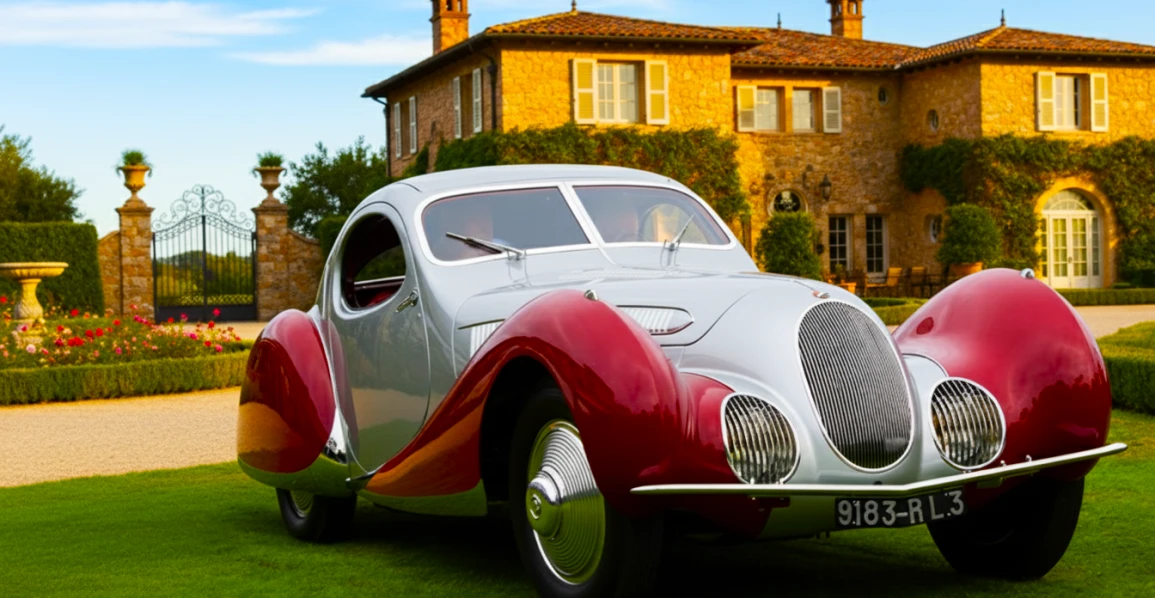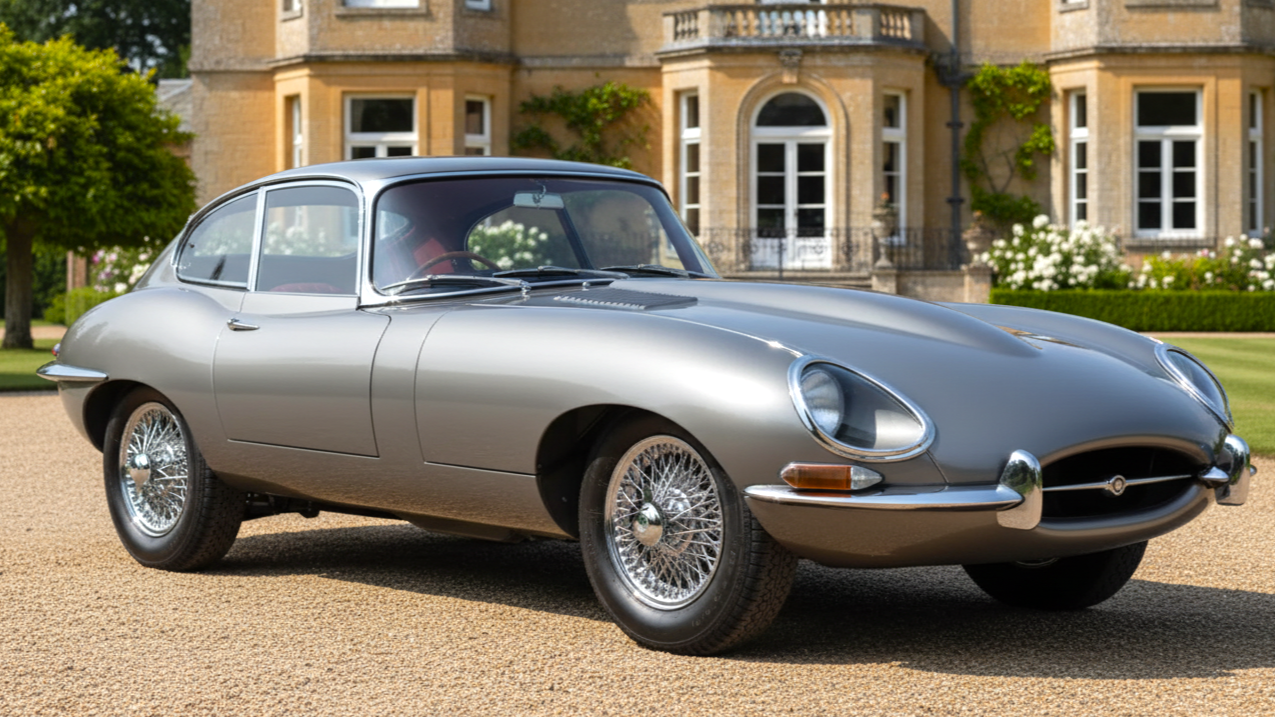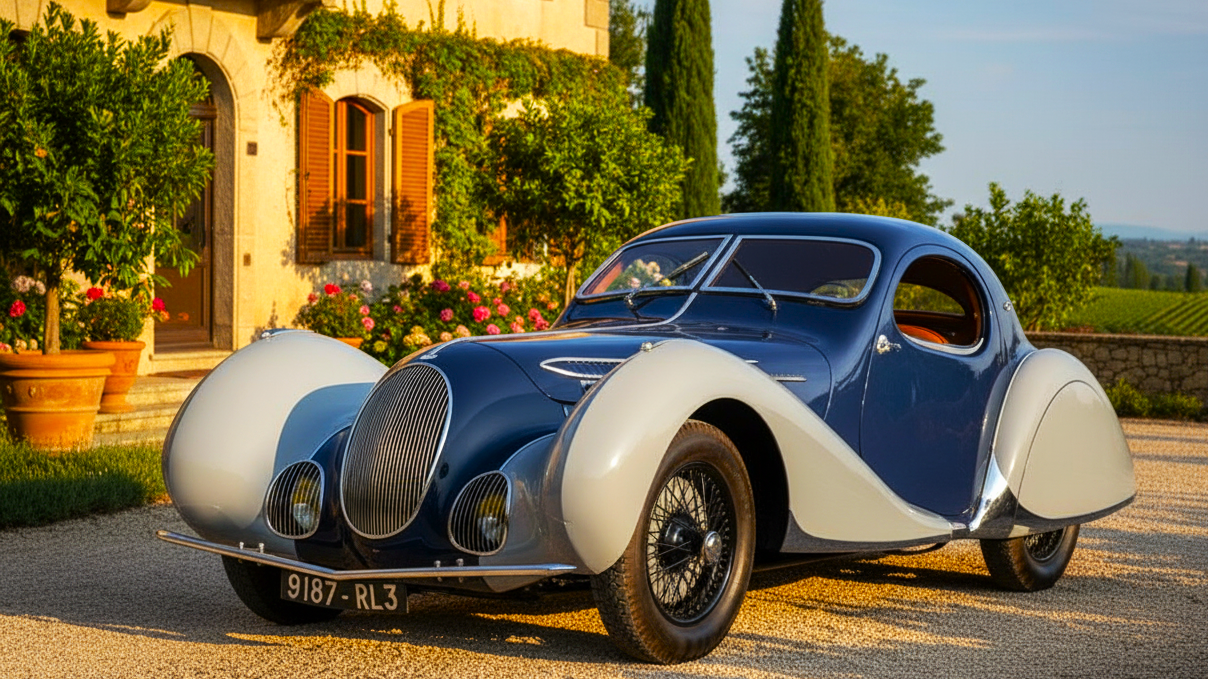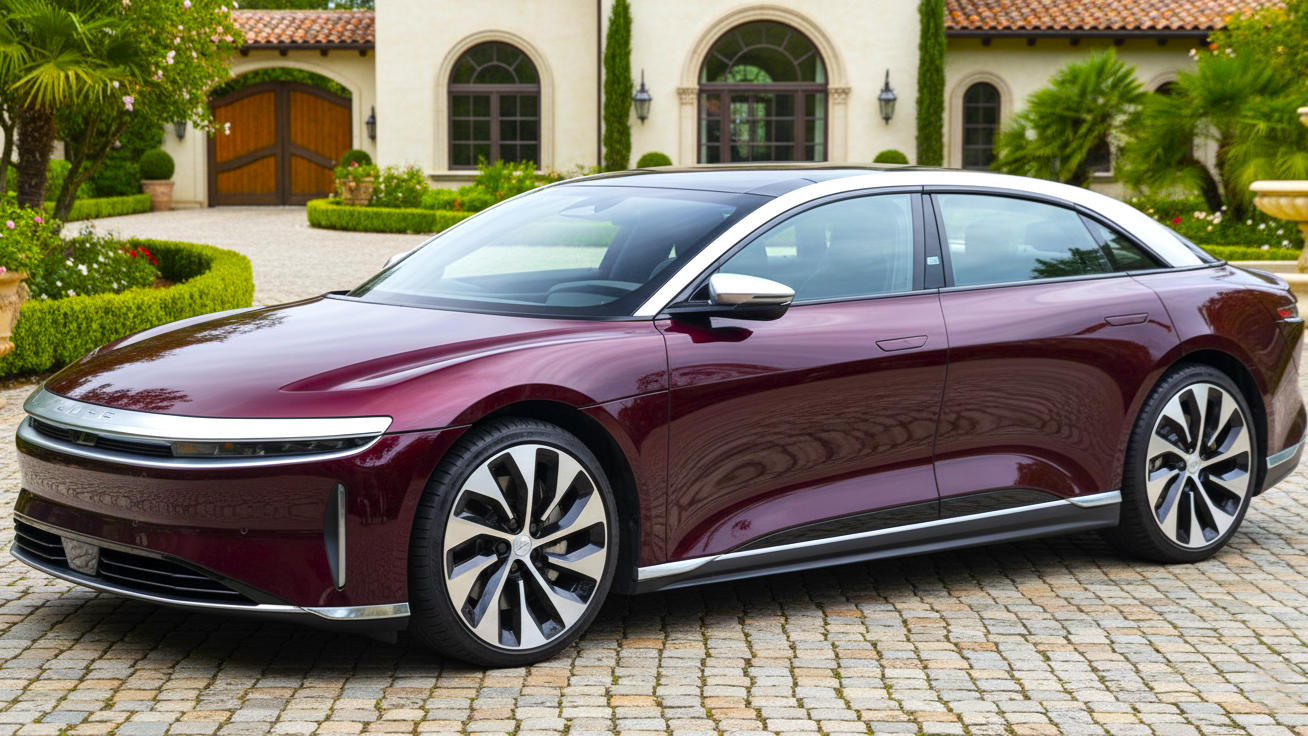The 10 Most Beautiful Cars in the World: Jaguar E-Type, Lamborghini Miura & More

A car has long ceased to be just a means of transportation. For many, it becomes a reflection of personality, a source of emotion, and even a work of art. Technical specifications, speed, and comfort are important, but the first thing that resonates with the soul is its appearance. The harmony of lines, balanced proportions, and a unique silhouette can turn a piece of metal into an object of desire.
The concept of beauty is subjective. What one person considers a masterpiece, another may find ostentatious. Nevertheless, in the history of automotive engineering, there are models whose design is recognized as a benchmark by a majority of critics, experts, and car enthusiasts worldwide. These cars have transcended time and become eternal style icons.
The purpose of our review is to present the 10 most beautiful cars in the world. We will look at cars that are not just visually striking but have also defined entire eras in design, influenced the industry, and continue to evoke admiration to this day.
What Makes a Car Truly Beautiful
Behind an impressive appearance, there is always a tremendous amount of work by designers and engineers. A car's beauty is not accidental but the result of a combination of several fundamental principles.
Here are the main components of great automotive design:
- Body Proportions and Harmony of Lines. The ratio of the hood's length to the cabin's volume, the size of the wheel arches, the roofline, and short overhangs—all together create the overall impression. The best designers intuitively follow the golden ratio, creating a visually balanced and harmonious silhouette.
- Style Icons. Retro vs. Modern Design. Classic cars of the 50s and 60s were handcrafted. Their smooth, sensual lines were drawn by hand and shaped with hammers on metal. Modern design, on the other hand, is born in computer modeling programs. It is more aggressive, technological, with sharp edges and complex aerodynamic elements. It is difficult to compare them directly—they reflect the spirit of their time.
- Designers Who Changed the Industry. Behind many masterpieces are the names of great masters and entire studios. Italian design houses like Pininfarina, Bertone, and Giugiaro have given the world hundreds of legendary models. Their signature style and bold decisions have defined the development of automotive design for decades.
- The Influence of Aerodynamics. In modern supercars and racing cars, form is inseparable from function. Every curve of the body, air intake, and spoiler serves one purpose: to provide maximum downforce and minimal air resistance. This functional beauty creates a sense of power and speed even when the car is stationary.
The 10 Most Beautiful Cars in the World
This list is an attempt to gather in one place the cars that are most often called masterpieces of design. Each of these machines has left an indelible mark on history and culture.
Model | Years of Production | Body Type | Designer / Studio |
Jaguar E-Type | 1961–1975 | Coupe / Roadster | Malcolm Sayer |
Lamborghini Miura | 1966–1973 | Coupe | Marcello Gandini (Bertone) |
Ferrari 250 GTO | 1962–1964 | Coupe | Giotto Bizzarrini, Sergio Scaglietti |
Mercedes-Benz 300 SL | 1954–1963 | Coupe (Gullwing) | Friedrich Geiger |
Alfa Romeo 33 Stradale | 1967–1969 | Coupe | Franco Scaglione |
Bugatti Type 57SC Atlantic | 1936–1938 | Coupe | Jean Bugatti |
Porsche 911 (Classic) | 1964–1989 | Coupe | Ferdinand "Butzi" Porsche |
Aston Martin DB5 | 1963–1965 | Coupe | Carrozzeria Touring |
Citroën DS | 1955–1975 | Sedan | Flaminio Bertoni |
Talbot-Lago T150-C SS | 1937–1939 | Coupe | Figoni et Falaschi |
1. Jaguar E-Type (1961)

- Manufacturer. Jaguar Cars (UK)
- Body Type. Coupe, Roadster
- Design Features. An incredibly long hood, a streamlined fuselage, a set-back cabin, and elegant lines. The E-Type's design was inspired by racing cars and aviation.
- History. Enzo Ferrari himself, upon seeing the E-Type, called it "the most beautiful car ever made." This phrase became the ultimate review and forever cemented the model's legendary status.
- Recognition. A constant feature in all lists of the most beautiful cars of all time. An E-Type is in the permanent collection of the Museum of Modern Art in New York.
2. Lamborghini Miura (1966)
.png?_t=1758046201)
- Manufacturer. Lamborghini (Italy)
- Body Type. Coupe
- Design Features. A low, predatory silhouette with a mid-engine layout that set the standard for all subsequent supercars. A special charm is added by the headlights, which "lie flat" when off and rise like eyelashes when turned on.
- History. The Miura was a sensation at the 1966 Geneva Motor Show. No one expected such a bold and revolutionary car from a tractor manufacturer.
- Recognition. Considered the world's first production supercar and one of Marcello Gandini's most brilliant creations.
3. Alfa Romeo 33 Stradale (1967)
.png?_t=1758046201)
- Manufacturer. Alfa Romeo (Italy)
- Body Type. Coupe
- Design Features. Sensuous, rounded forms, "butterfly" doors, and a panoramic windshield that extends onto the roof. The 33 Stradale's design is the quintessence of Italian elegance and passion.
- History. Only 18 units were ever produced, making it one of the rarest and most expensive cars in the world.
- Recognition. Many collectors and designers consider it the most beautiful car ever created, challenging the E-Type for the top spot.
4. Mercedes-Benz 300 SL "Gullwing" (1954)
.png?_t=1758046201)
- Manufacturer. Mercedes-Benz (Germany)
- Body Type. Coupe
- Design Features. The main feature is the "gull-wing" doors, which were not a design whim but an engineering necessity due to the high and wide frame.
- History. A civilian version of a successful racing car that became a hit in the American market and a symbol of German engineering genius.
- Recognition. One of the most recognizable cars in history. The most beautiful cars often have unique features, and the "Gullwing" is a prime example.
5. Bugatti Type 57SC Atlantic (1936)
.png?_t=1758046201)
- Manufacturer. Bugatti (France)
- Body Type. Coupe
- Design Features. A teardrop shape, a low stance, and the famous dorsal seam running from the hood to the tail. This riveted seam was necessary because the body panels were made of a lightweight but difficult-to-weld magnesium alloy.
- History. Only four were ever made, and only three have survived to this day. Jean Bugatti's personal car (one of the four) disappeared without a trace before World War II.
- Recognition. The pinnacle of pre-war Art Deco automotive design, one of the most valuable collector cars in the world.
6. Ferrari 250 GTO (1962)
.png?_t=1758046201)
- Manufacturer. Ferrari (Italy)
- Body Type. Coupe
- Design Features. An aggressive yet elegant racing silhouette. Every line here serves a function—to achieve maximum speed. The design was created and refined in a wind tunnel.
- History. Created for racing but homologated for public roads. It is considered the "Holy Grail" for Ferrari collectors.
- Recognition. The combination of racing success, rarity, and incredible aesthetics makes it one of the most desirable and expensive cars in history.
7. Porsche 911 (1964)
.png?_t=1758046201)
- Manufacturer. Porsche (Germany)
- Body Type. Coupe
- Design Features. A unique silhouette with a sloping roofline and round headlights that has remained virtually unchanged for 60 years. The 911's design is an example of evolution, not revolution.
- History. Created as a replacement for the 356 model, the 911 became the most mass-produced and recognizable sports car in the world.
- Recognition. Its design is timeless. The ability to remain relevant for decades makes it one of the most beautiful cars by design.
8. Aston Martin DB5 (1963)
.png?_t=1758046201)
- Manufacturer. Aston Martin (UK)
- Body Type. Coupe
- Design Features. An elegant and muscular British Gran Turismo. The DB5's design is a balance between sophistication and hidden power.
- History. It became world-famous as James Bond's car in the movie "Goldfinger," after which it has been forever associated with the image of agent 007.
- Recognition. An icon of British style and one of the most famous cars in cinema.
9. Citroën DS (1955)
.png?_t=1758046201)
- Manufacturer. Citroën (France)
- Body Type. Sedan
- Design Features. A futuristic, aerodynamic design that was decades ahead of its time. A single-spoke steering wheel, covered rear wheels, and a complete absence of a radiator grille.
- History. At the 1955 Paris Motor Show, 743 orders were taken in the first 45 minutes, and 12,000 by the end of the day. The car had the effect of a bombshell.
- Recognition. Often called the "Goddess" (Déesse in French). An example of how a mass-produced family sedan can be a work of avant-garde art.
10. Talbot-Lago T150-C SS "Goutte d'Eau" (1937)

- Manufacturer. Talbot-Lago (France)
- Body Type. Coupe
- Design Features. A "teardrop" (Goutte d'Eau) body by the coachbuilder Figoni et Falaschi. The embodiment of the Art Deco style with its flowing, theatrical, and luxurious forms.
- History. Each car was built to individual order, so no two are exactly alike.
- Recognition. One of the most brilliant examples of pre-war coachbuilding art. These cars regularly win top prizes at the most prestigious concours d'elegance.
Modern Beauties: The Best-Designed Cars of Recent Years
Beauty in the automotive world has not been left in the past. Modern designers, armed with new technologies, continue to create masterpieces.
Here are a few striking examples:
- Ferrari Roma. Its design is praised for its clean lines and references to classic GTs of the 60s. There is no excessive aggression, only elegance and power.
- Audi e-tron GT. Proof that electric cars can be beautiful. The low, wide, and muscular silhouette creates the impression of a sports car, not a family sedan.
- Lucid Air. An example of futuristic minimalism. The smooth, aerodynamic body with thin lighting creates the image of a car from the future.

- Koenigsegg Jesko. Here, beauty is born from function. Every wing and air intake serves aerodynamics, but together they form an aggressive and mesmerizing image.
- Polestar 1. Scandinavian minimalism in action. Clean, sharp lines, powerful proportions, and no unnecessary details.
Conclusion
The beauty of a car is a complex cocktail of harmonious lines, balanced proportions, engineering thought, and the emotions it evokes. The most beautiful cars ever made are not just transportation but a cultural heritage that inspires and delights generations.
When we choose a car, we choose not only its characteristics but also its history, style, and character. Ultimately, the most beautiful car in the world is the one that makes you turn around after you've parked it.
Explore our catalog to find a car that will please you not only with its reliability but also with its appearance during your travels in Cyprus.


